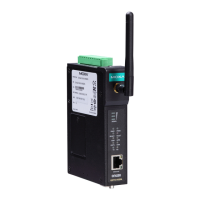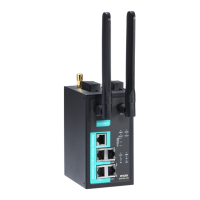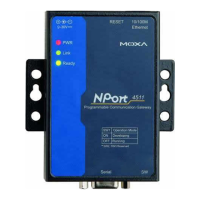OnCell G3100 Series Introducing Serial Port Operation Modes
Overview
The OnCell G3100 IP gateway can cellular network-enable a serial device. OnCell G3100 IP gateway device is
assigned an IP address by your service provider (your “cellular ISP”). In addition, the OnCell G3100 IP gateway
can cellular network-enable Ethernet devices on the local Ethernet – see chapter 5 for details.
For Cellular-Enabling Serial Devices, The OnCell G3100 cellular IP gateway enables traditional serial
(RS-232/422/485) devices for transmitting data over the cellular network. The IP gateway is a tiny computer
equipped with a CPU and TCP/IP protocols that can bi-directionally translate data between the serial and IP
formats. With the OnCell G3100, your computer will be able to access, manage, and configure remote facilities
and equipment over the cellular network from anywhere in the world.
Traditional SCADA and data collection systems rely on serial ports to collect data from various kinds of
instruments. Since the OnCell G3100 cellular IP gateway network-enables instruments equipped with an
RS-232, RS-422, or RS-485 communication port, your SCADA and data collection system will be able to access
all devices connected to a standard TCP/IP network, regardless of whether the devices are used locally or at a
remote site.
The OnCell G3100 is an external IP-based network device that allows you to expand a serial port for a host
computer on demand. As long as your host computer supports the TCP/IP protocol, you will not be limited by
the host computer’s bus limitation (such as ISA or PCI), nor will you be limited if you do not have drivers for
various operating systems.
In addition to providing socket access, the OnCell G3100 also comes with a Real COM/TTY driver and a Reverse
Real COM/TTY driver that transmits all serial signals intact. This enables you to preserve your existing
COM/TTY-based software without needing to invest in additional software.
Three different socket modes are available: TCP Server, TCP Client, and UDP. The main difference between the
TCP and UDP protocols is that TCP guarantees delivery of data by requiring the recipient to send an
acknowledgement to the sender. UDP does not require this type of verification, making it possible to offer faster
delivery. UDP also allows you to unicast data to one IP, or multicast the data to a group of IP addresses.
The OnCell G3100 supports standard SSL secure data access for Real COM/TTY modes, Reverse Real COM/TTY
modes, TCP server mode, and TCP Client mode to protect data transmitted over the cellular network.
Device Control Applications
The OnCell G3100 offers the following modes for device control applications: Real COM/Secure Real COM,
Reverse Real COM/Secure Reverse Real COM, and RFC2217 modes.
Real COM and Secure Real COM Modes
The OnCell G3100 comes bundled with Moxa drivers for Windows 98/ME/NT/ 2000/XP/2003/2008/Vista
systems and TTY drivers for Linux and Unix systems. Real COM mode includes optional data encryption using
SSL. (For Windows systems, this option is only supported for Windows 2000, XP x86/x64, 2003 x86/x64, Vista
x86/x64, and 2008 x86/x64.)

